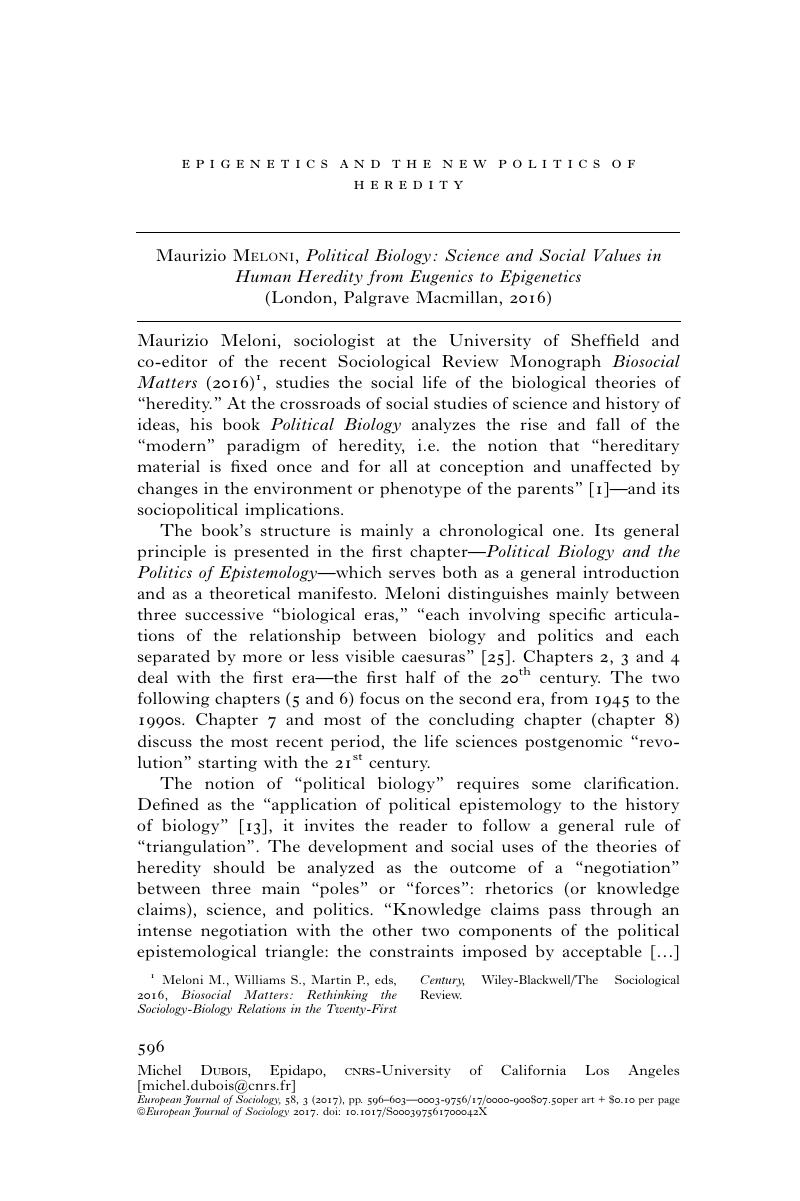Published online by Cambridge University Press: 04 December 2017

1 Meloni M., Williams S., Martin P., eds, 2016, Biosocial Matters: Rethinking the Sociology-Biology Relations in the Twenty-First Century, Wiley-Blackwell/The Sociological Review.
2 Butterfield H., 1931, The Whigh Interpretation of History, Reed. Norton & Company, 1965. Cf. also Mayr E., 1990, “When is Historiography Whiggish?”, Journal of the History of Ideas, 51 (2): 301-309.
3 For example Niewöhner J., “Epigenetics: Embedded bodies and the molecularisation of biography and milieu”, Biosocieties, 6 (3): 279-298; Pickersgill M., Niewöhner J., Müller R., Martin P., Cunningham-Burley S., 2015, “Mapping the new molecular landscape: social dimensions of epigenetics”, New Genetics and Society, 32 (4): 429-447; Tolwinsky K., 2013 “A new genetics or an epiphenomenon? Variations in the discourse of epigenetics researchers”, New Genetics and Society, 32 (4): 366-384.
4 Juengst E., Fishman J., McGowan M., Stersten R., “Serving epigenetics before its time”, Trends in Genetics, 30, 10, 2014: 427-429.
5 See for instance J. Greally’s blog, http://epgntxeinstein.tumblr.com/post/127416455028/over-interpreted-epigenetics-study-of-the-week.